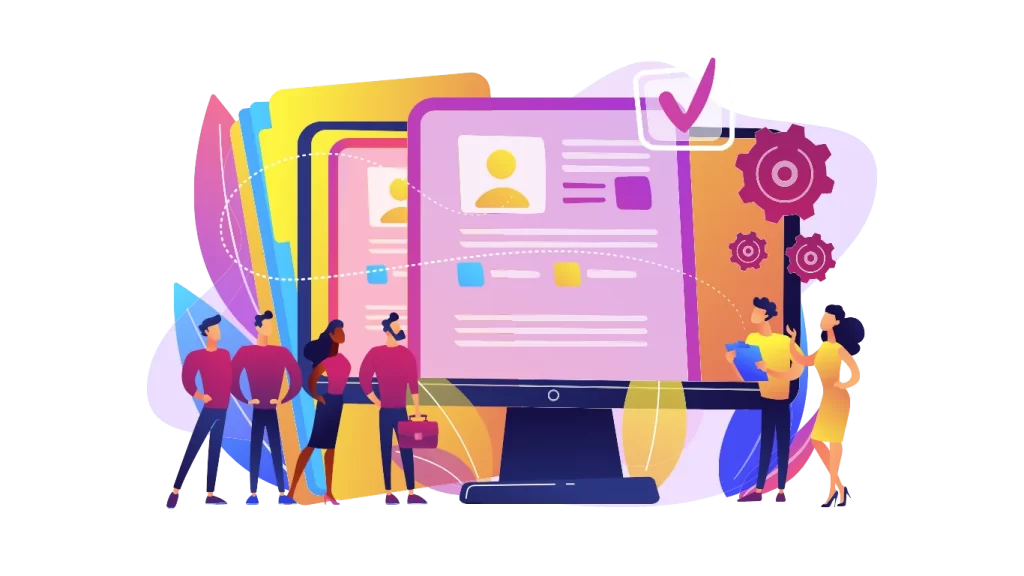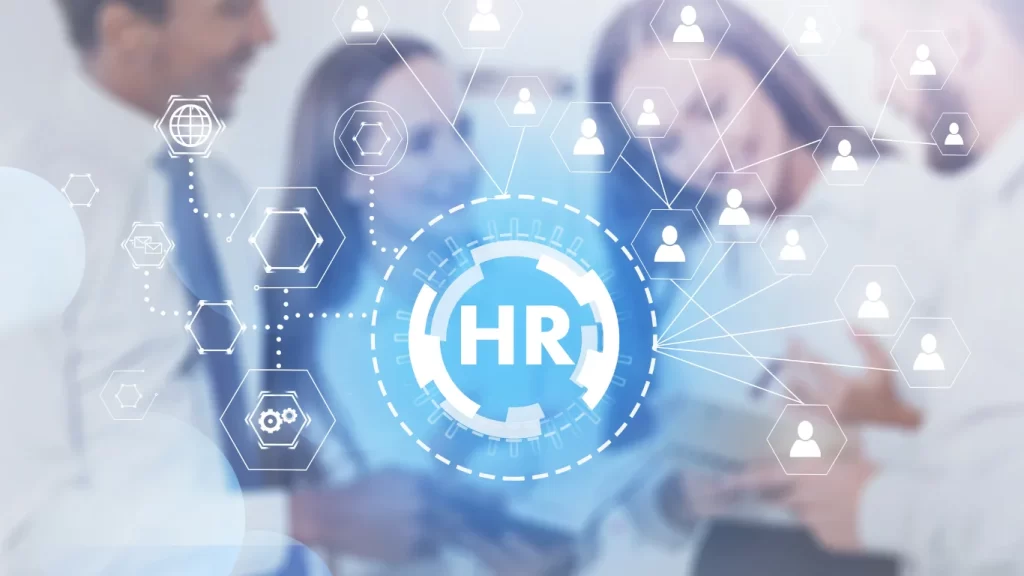HR software history development has gone through many changes. It started with basic database systems and has now become more complex, including payroll, talent management, and benefits administration. In the past, HR processes were manual and inefficient, which led to the creation of the first HR software. This software improved efficiency and changed how human resources management was done. More advanced HR software is expected to be available by 2024.
This article explores the hr software history development, from essential data management to advanced solutions that integrate performance appraisal, learning modules, and cybersecurity measures. The evolution of HR software demonstrates the industry’s adaptability and growth, pointing towards future developments in predictive analytics and mobile application integration. The article covers the milestones and challenges of HR software, providing insights into its past, present, and future. By looking at the progress of technology, we can see how it has grown to meet the needs of businesses and anticipate upcoming trends.
The Genisis of HR software history development

HR software history development has come a long way since its inception. The evolution of HR software has been marked by several significant milestones that have transformed manual processes into the sophisticated systems we use today:
- Before the 1950s, The earliest HR technology consisted of manual filing systems and punch card systems for tracking time and attendance. These rudimentary systems laid the groundwork for future innovations in HR technology.
- 1950s – 1980s:
- The introduction of the Lyons Electronic Office (LEO) in the 1950s revolutionised business clerical tasks, including payroll, by utilising the first computerised system.
- The 1970s introduced the first Applicant Tracking System (ATS) to manage job applications, signalling the beginning of HR’s digital transformation.
- By the 1980s, ERP systems like SAP R/2 began integrating HR functionality with other business operations, enhancing efficiency and data centralisation.
- The 1990s Onwards: This era marked a significant leap in HR technology with the introduction of HRMS ERP vendors like Oracle and JD Edwards. PeopleSoft, launched in 1987, was pivotal, offering a comprehensive HRMS covering core HR functions, recruiting, learning, US payroll, and reporting. This period saw HR transitioning from a paper-based function to an integrated, digital-first approach.
These milestones underscore the development of hr software history development, highlighting the shift from manual, paper-based processes to automated, comprehensive HR systems.
The Rise of Comprehensive HR Systems

The evolution of HR software history development into comprehensive HR systems marked a significant leap in how businesses manage their workforce. Several vital developments characterised this transition:
- Integration of Core HR Functions:
- Comprehensive employee databases
- Performance management and appraisal systems
- Learning and development modules
- Recruitment and onboarding processes
- Benefits and compensation management
- Technological Advancements and Adoption:
- Late 1990s: Introduction of intranets, boosting internal communications
- Early 2000s: 15% of organisations adopted employee self-service technology, a figure that soared to 90% by 2015
- The mid-2010s: Significant investments in predictive people analytics and the replacement of many HR applications with dedicated HR portals
- Milestones in HR Software Accessibility:
- 1992: Launch of the first job board sites
- 1994: Online recruitment platforms like Monster expanded the talent pool
- The 1980s-1990s: The advent of personal computers (PCs) led to improved HR services’ speed and efficiency
These developments underscored the hr software history development, transitioning from manual, paper-based processes to automated, comprehensive HR systems that address a wide range of HR functions.
Transition to Web-Based Platforms
The transformation of HR software history development took a significant turn with the advent of the World Wide Web in 1991, which catalysed the development of web-based platforms. These platforms marked a departure from traditional client-server technology, enabling HR systems to be accessible beyond the confines of HR departments. Several pivotal developments can characterise this era:
- Eras of HRIS Evolution:
- Mainframe Era (1940s): Focused on automating payroll and data-intensive functions.
- Client Server Era (Mid-1980s): Introduced databases for HRM accessible from PCs.
- ERP and Web-based Systems Era (Mid-1990s): Integrated, web-enabled ERP systems emerged.
- Cloud-based Systems Era (Since 2010): Characterised by cloud applications, enhancing efficiency and flexibility.
- Key Features of Web-based Systems:
- Remote access capabilities.
- Enhanced data storage and computing capacity.
- Introduction of employee self-service platforms.
- Integration with social media for recruitment and employer branding.
The shift to web-based platforms not only democratised access to HRMS systems but also introduced innovations such as chatbots for HR services and SaaS platforms, revolutionising the HR landscape.
Modern HR Software: Integration and Innovation

The landscape of HR software history development has undergone a significant transformation, seamlessly integrating innovative technologies to enhance HR tasks and employee experiences. Several vital innovations characterise this progression into the modern era:
- Automation and AI Integration:
- AI and Automation: Streamline repetitive tasks, including resume screening, interview scheduling, and report generation.
- Chatbots and Virtual Agents: Provide instant responses to employee inquiries, improving communication efficiency.
- AI-based Recruitment Tools: Optimise candidate selection by analysing resumes and application materials.
- Enhanced Employee Experience:
- Digital Onboarding: Simplifies the onboarding process through automated tasks and training.
- Employee Self-Support Portals: Offer direct access to HR resources, enhancing self-service capabilities.
- Mobile Apps: Enable employees to manage their profiles, request time off, and access company updates anytime, anywhere.
- Data Analytics and Security:
- Data-Driven Analytics: Facilitate informed decision-making with comprehensive data analysis on talent acquisition and workforce planning.
- Cybersecurity Measures: Ensure the protection of sensitive employee and company data.
- Blockchain Technology: Streamlines processes such as credential verification and payroll processing, offering a secure and efficient solution.
These advancements underscore the journey of HR software history development towards creating more efficient, secure, and employee-centric HRM systems.
Challenges in HR Software Development
Despite the advancements in HR software history development, organisations face several challenges when implementing and managing HR systems:
- Selection and Implementation Challenges:
- Overwhelming Choices: With a vast array of HR software options available, selecting the right tools that align with organisational needs can be daunting.
- Training and Adoption: The effectiveness of new HR technology is often hindered by inadequate vendor training support and employee resistance to learning new systems.
- Compliance and Security: Ensuring compliance with employment laws and safeguarding against cybersecurity threats remain paramount concerns.
- System Integration and Management:
- Piecemeal Systems: Organisations using multiple, separate systems for HR functions may encounter inefficiencies, data inconsistencies, and increased IT costs for maintenance and upgrades.
- Scalability and Customisation: Non-scalable HR software can severely limit a growing business, necessitating frequent system evaluations to ensure they meet evolving needs.
- Data Management and Accessibility:
- Data Security: Storing sensitive employee information on local PCs or file cabinets poses significant risks of data theft or destruction.
- Remote Access: The lack of mobile capabilities restricts remote employees’ access to critical HR information, highlighting the need for systems that support mobile access and real-time data availability.
Selecting, implementing, and managing hr software history development requires a strategic approach that guarantees scalability, integration, compliance, and security. In order to ensure that the systems function effectively, it is essential to choose the right software and manage it properly. This involves using a clear and concise writing style, organising information logically, and using everyday language that is easy to understand. By following these guidelines, HR professionals can ensure that their systems are practical and efficient.
Future Trends in HR Software
As HR software history development progresses, the future trends in HRM software are shaping up to revolutionise how organisations manage their workforce. These trends not only cater to operational efficiency but also emphasise employee well-being and adaptability to the changing work environment. HR software history development has come along way.
- Innovative Technologies and Employee Experience:
- Predictive analytics in talent acquisition to make hiring more efficient.
- Mobile HRM applications are available anytime, anywhere.
- Integration of VR and AR in training, offering immersive learning experiences.
- Enhanced cybersecurity measures to protect sensitive data.
- Shifts in Workplace Culture and Practices:
- A focus on employee well-being, with 81% of workers seeking mental health support.
- Skills-based hiring prioritises potential and capabilities over traditional degrees.
- Hybrid working models combining remote and on-site work are becoming the norm.
- ESG reporting gains momentum, influencing talent acquisition strategies.
- Technological Advancements in HR Management:
- Cloud-based HRIS models offer scalable and flexible solutions.
- Global payroll technology and EOR tools streamline the management of a distributed workforce.
- Business intelligence software aids in building out skills libraries and enhancing skill-matching processes.
These trends highlight a comprehensive shift towards more integrated, flexible, and employee-centric HR solutions, promising a future where HR software plays a pivotal role in shaping organisational success and employee satisfaction.
Conclusion
Throughout this exploration of HR software history development, we have journeyed from the era of manual, paper-based processes to the dawn of sophisticated, automated HR systems that now anchor the modern workplace.
The evolution vividly illustrates not only the remarkable strides in technology and integration but also the relentless pursuit of efficiency, security, and improved employee experience. The development of HR software has been a cornerstone in reshaping the landscape of human resources management, underlining the importance of adaptability and innovation in harnessing the full potential of HR technologies.
Looking ahead, the future of hr software history development is poised to transcend traditional boundaries further, driven by predictive analytics, mobile application integration, and an unwavering focus on fostering an employee-centric work environment. These advancements suggest a continuous trajectory towards more streamlined, secure, and inclusive HR management systems.
As organisations navigate these changes, the lessons learned from the history of HR software development will undoubtedly serve as a guiding light, emphasising the essential role of technology in shaping effective, forward-thinking HR strategies that prioritise both organisational needs and employee well-being.





